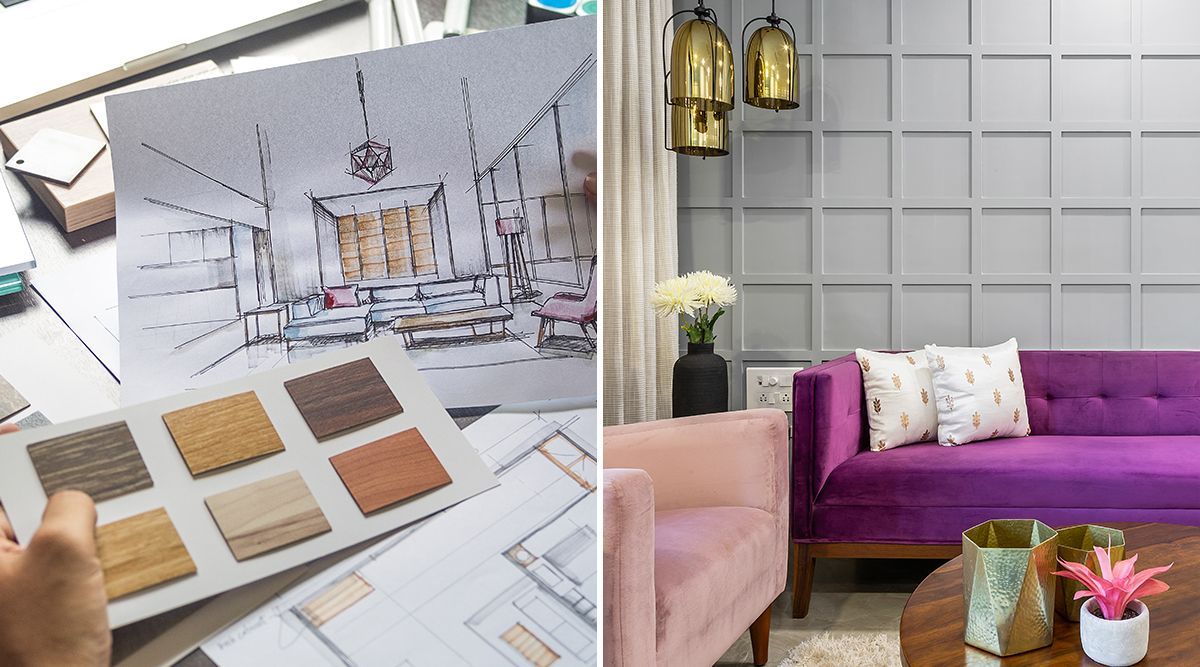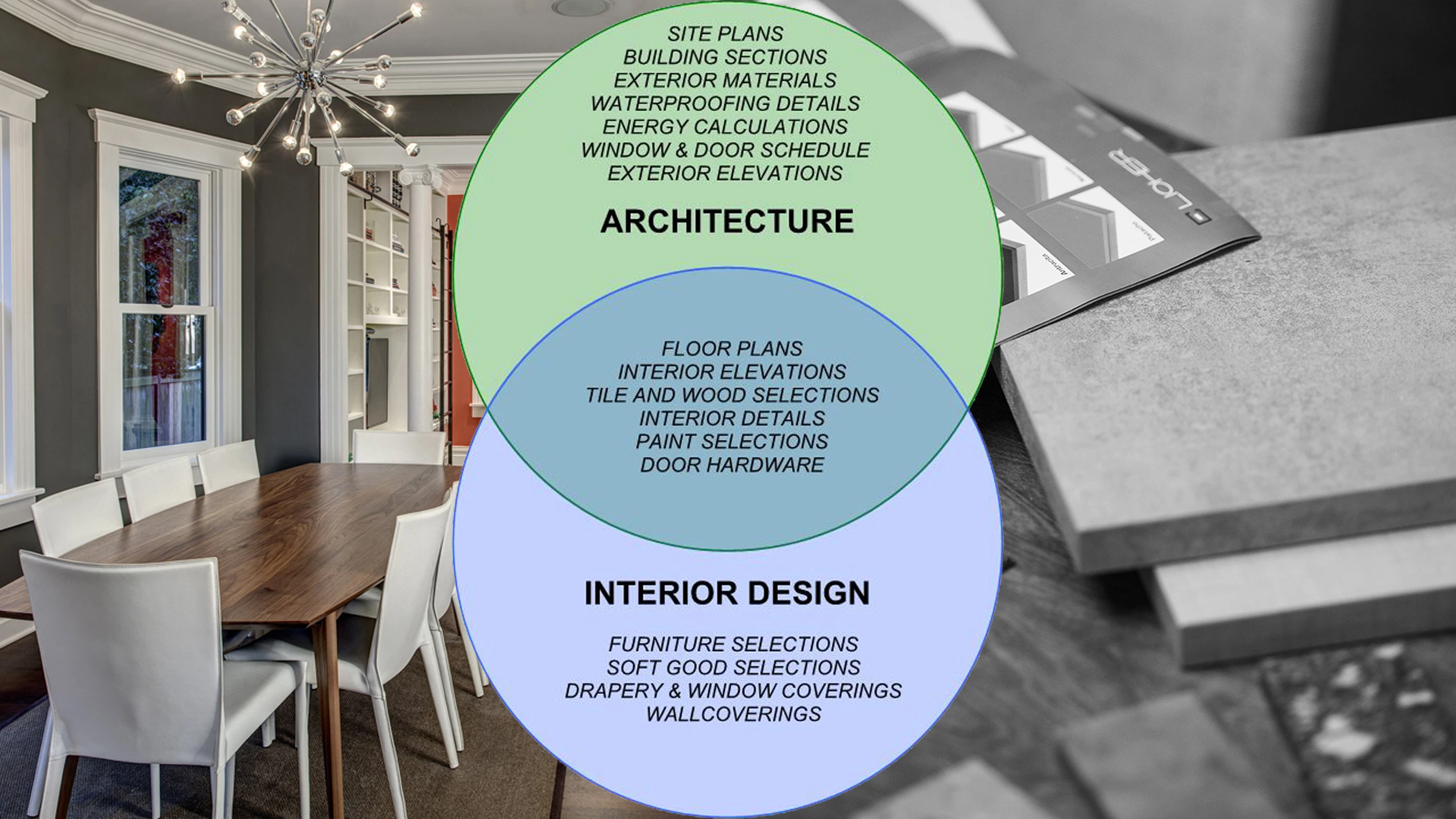Premier Winchester Architecture Services for Unique Home Designs
Premier Winchester Architecture Services for Unique Home Designs
Blog Article
The Art of Equilibrium: Just How Interior Design and Home Architect Collaborate for Stunning Results
In the realm of home design, striking an equilibrium in between appearances and capability is no tiny accomplishment. This delicate equilibrium is achieved via the unified partnership between interior developers and engineers, each bringing their special know-how to the table. Remain with us as we explore the intricacies of this collective procedure and its transformative influence on home style.
Comprehending the Core Differences In Between Interior Decoration and Home Design
While both Interior Design and home architecture play essential duties in producing aesthetically pleasing and useful rooms, they are inherently various disciplines. Home design mainly concentrates on the architectural aspects of the home, such as constructing codes, security policies, and the physical building and construction of the room. It handles the 'bones' of the framework, dealing with spatial measurements, load-bearing wall surfaces, and roof layouts. On the other hand, Interior Design is much more worried with enhancing the sensory and visual experience within that framework. It entails choose and setting up furnishings, selecting color pattern, and including decorative elements. While they operate in tandem, their roles, obligations, and locations of know-how diverge substantially in the creation of a harmonious home setting.
The Synergy Between Home Design and Inside Layout
The synergy between home design and Interior Design hinges on a common vision of layout and the enhancement of functional looks. When these 2 areas align harmoniously, they can transform a home from normal to extraordinary. This collaboration requires a deeper understanding of each self-control's principles and the capability to create a cohesive, cosmetically pleasing setting.
Unifying Layout Vision
Combining the vision for home architecture and Interior Design can produce an unified space that is both functional and visually pleasing. The equilibrium begins with an integrated state of mind; engineers and indoor developers work together, each bringing their know-how. This unison of concepts develops the style vision, a blueprint that guides the project. This common vision is crucial for uniformity throughout the home, making sure a liquid shift from exterior style to indoor areas. It promotes a synergistic strategy where building aspects complement Interior Design parts and vice versa. The result is a natural home that shows the property owner's taste, personality, and way of living. Thus, unifying the layout vision is vital in blending style and Interior Design for stunning outcomes.
Enhancing Functional Appearances
How does the synergy between home architecture and indoor design boost practical aesthetic appeals? Engineers lay the foundation with their structural design, ensuring that the space is efficient and functional. An architect may develop a home with high ceilings and huge windows.
Value of Collaboration in Creating Balanced Spaces
The cooperation between interior developers and architects is crucial in producing well balanced areas. It brings consistency between layout and design, bring to life areas that are not only visually pleasing but likewise useful. Exploring successful collaborative methods can provide understandings right into exactly how this harmony can be efficiently attained.
Harmonizing Style and Style
Balance, an essential element of both Interior Design and architecture, can only really be attained when these two fields operate in harmony. This harmony is not simply a visual consideration; it impacts the capability, sturdiness, and inevitably, the i loved this livability of a view publisher site space. Interior architects and designers should recognize each various other's roles, value their knowledge, and interact properly. They must think about the interaction of architectural components with decor, the flow of spaces, and the influence of light and shade. This joint process leads to a natural, well balanced design where every aspect has an objective and adds to the overall aesthetic. As a result, balancing style and design is not nearly developing attractive rooms, yet concerning crafting rooms that function flawlessly for their citizens.
Successful Collaborative Approaches

Case Researches: Successful Integration of Layout and Style
Examining a number of instance researches, it becomes evident just how the successful integration of indoor design and architecture can transform an area. Designer Philip Johnson and interior designer Mies van der Rohe worked together to develop an unified equilibrium in between the interior and the Winchester architect structure, resulting in a seamless flow from the exterior landscape to the inner living quarters. These situation researches underscore the extensive influence of an effective design and architecture collaboration.

Getting Over Difficulties in Design and Style Partnership
In spite of the undeniable advantages of a successful cooperation between Interior Design and architecture, it is not without its obstacles. Communication concerns can occur, as both events may make use of different terms, understandings, and methods in their job. This can result in misconceptions and delays in job conclusion. One more significant challenge is the harmonizing act of visual appeals and capability. Architects might focus on structural stability and safety and security, while designers concentrate on convenience and style. The combination of these purposes can be complex. Furthermore, spending plan and timeline constraints commonly add pressure, potentially creating breaks in the collaboration. Reliable interaction, mutual understanding, and compromise are important to get rid of these obstacles and attain a successful and harmonious collaboration.

Future Patterns: The Advancing Connection In Between Home Architects and Interior Designers
As the globe of home design remains to evolve, so does the connection in between architects and interior developers. The trend leans in the direction of an extra collaborative and integrated strategy, breaking devoid of typical roles. Designers are no much longer solely concentrated on architectural honesty, but likewise involve in enhancing aesthetic charm - Winchester architect. Alternatively, indoor designers are embracing technological facets, affecting overall layout and performance. This progressing synergy is driven by advancements in innovation and the growing need for rooms that are not just aesthetically pleasing yet also useful and sustainable. The future assures an extra natural, cutting-edge, and flexible approach to home design, as designers and architects remain to blur the lines, promoting a connection that genuinely symbolizes the art of equilibrium.
Final thought
The art of equilibrium in home style is achieved via the unified partnership between indoor developers and architects. An understanding of each various other's techniques, efficient communication, and shared vision are essential in developing aesthetically sensational, practical, and inviting rooms. In spite of challenges, this collaboration cultivates development and development in layout. As the partnership between home architects and indoor designers evolves, it will certainly continue to form future fads, improving comfort, performance, and personal expression in our living rooms.
While both interior layout and home architecture play crucial functions in developing aesthetically pleasing and practical spaces, they are inherently various disciplines.The synergy in between home architecture and interior layout lies in a shared vision of layout and the enhancement of practical visual appeals.Merging the vision for home architecture and interior style can develop a harmonious living area that is both useful and cosmetically pleasing. Thus, unifying the style vision is critical in blending design and indoor design for sensational results.
How does the synergy between home design and indoor design enhance functional looks? (Winchester architect)
Report this page